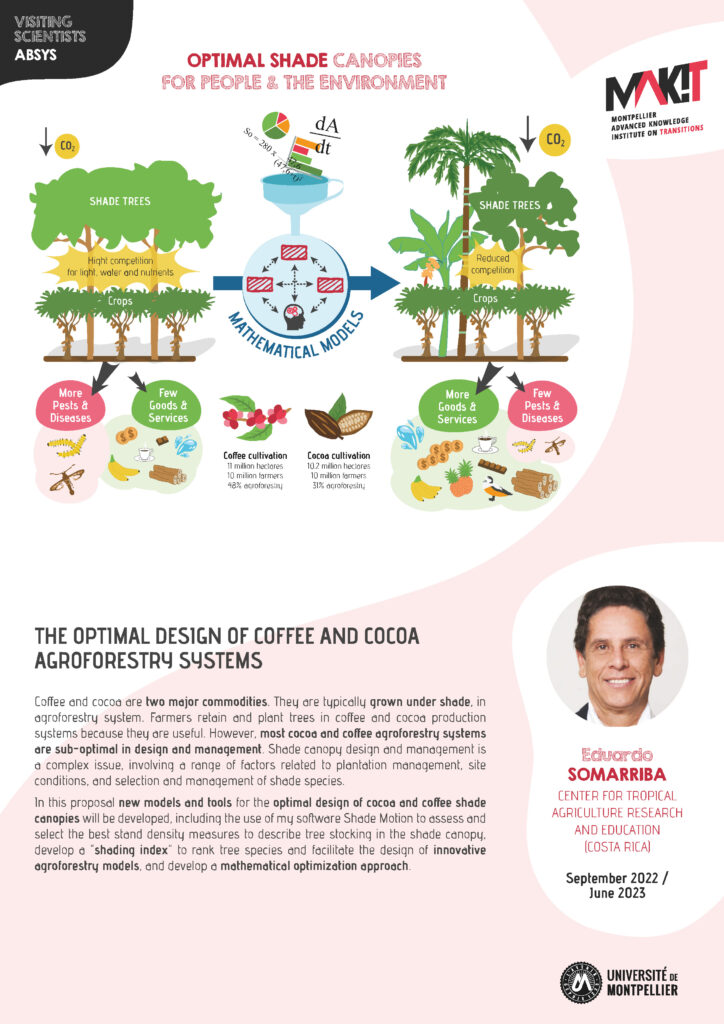Eduardo Somarriba
Eduardo Somarriba has a PhD in Biology (agro-ecology) by the University of Michigan. He is Professor of Tropical Agroforestry at the Center for Tropical Agriculture Research and Education (CATIE), in Costa Rica.
His current field of research focuses on the optimal design and management of trees on farms, shade design and management in multi-strata agroforestry systems with coffee and cacao. His experience in agroforestry also includes the ecology and management of trees in crop fields and pasturelands, with a special focus on naturally-regenerated, valuable (fruit and timber) tree species.
Dr Somarriba has been a top manager in various positions at CATIE, led many rural development projects in various Latin American countries, worked as a consultant, and has more than 200 publications, including scientific articles, technical manuals, books and educational materials for university students and farmers.
Coffee and cocoa are two major commodities. Coffee is cultivated on 11 million hectares and involves 25 million farmers producing 9.22 million tons of green coffee annually. Cocoa is cultivated in 10.2 million hectares and involves 10 million cocoa farmers producing 4.47 million tons of dry cocoa beans annually.
Coffee and cocoa are typically grown under shade, in agroforestry system. Farmers retain and plant trees in coffee and cocoa production systems because they are useful. However, most cocoa and coffee agroforestry systems are sub-optimal in design and management. Shade canopy design and management is a complex issue, involving a range of factors related to plantation management, site conditions, and selection and management of shade species.
In this proposal new models and tools for the optimal design of cocoa and coffee shade canopies will be developed, including the use of my software Shade Motion to assess and select the best stand density measures to describe tree stocking in the shade canopy, develop a “shading index” to rank tree species and facilitate the design of innovative agroforestry models, and develop a mathematical optimization approach.
